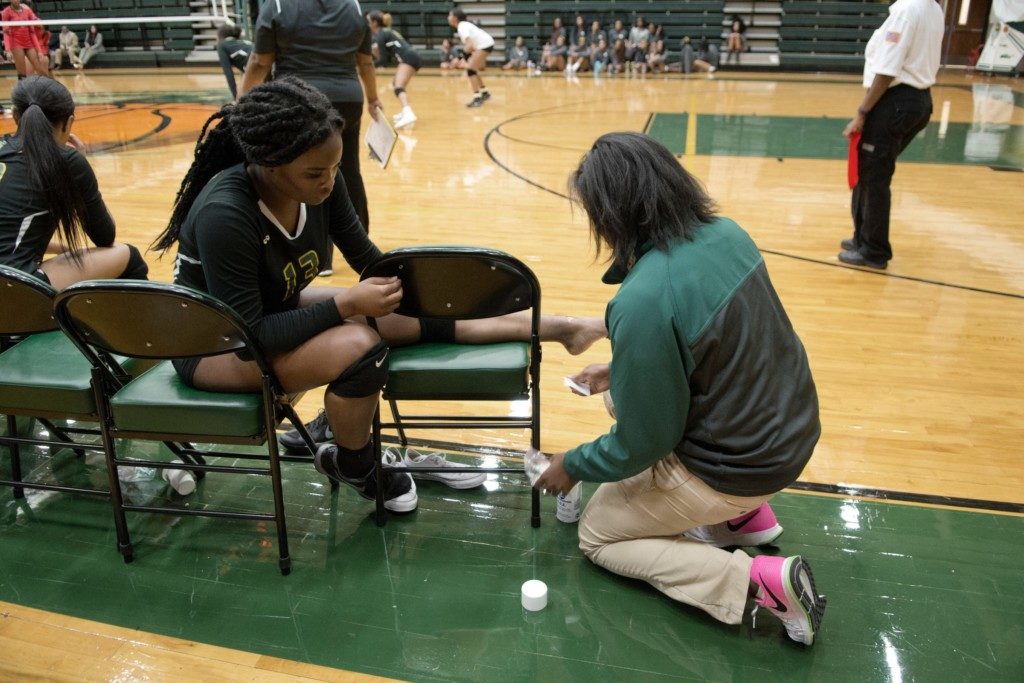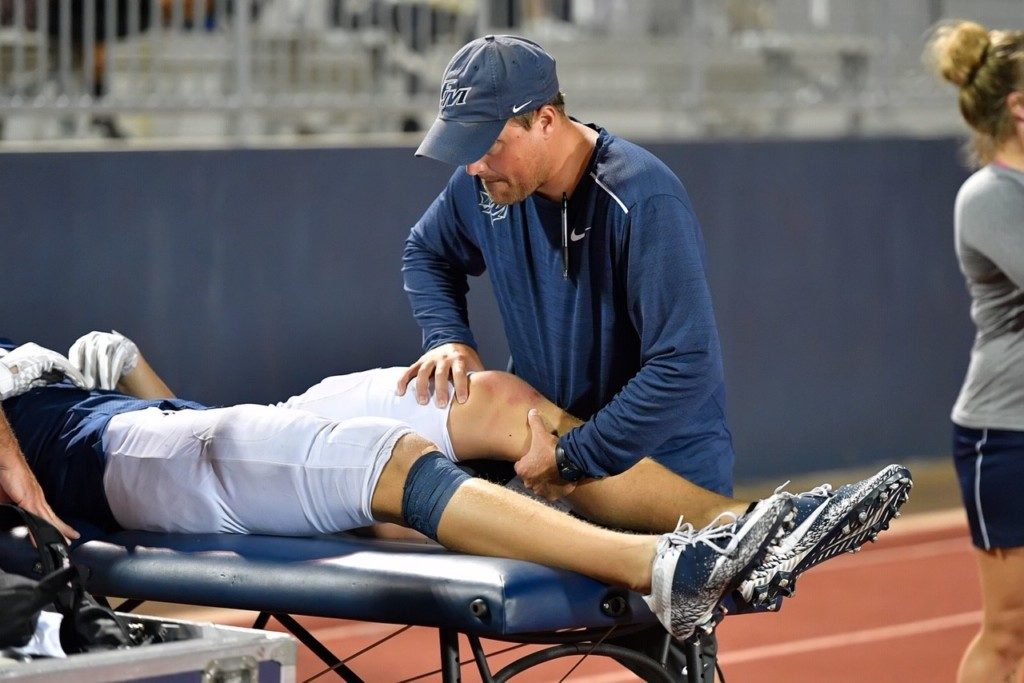**This post has been sponsored by At Your Own Risk to bring you this experience. All opinions are 100% our own!**
 We are starting a serious sports career in our family (well…as serious as you can get at 4 years-old). My son comes from a long line of student athletes: his father played baseball in college and his father played baseball in college. His grandfather played tennis in Canada and his great-grandfather played basketball in Kansas. A life as a student athlete for our kiddo is inevitable. As a mom new to this sports life (I watched sports, I didn’t play them), I want to make sure my son sustains few injuries and has access to healthcare professionals who will make sure he is well-taken care of. In a sea of millions of young athletes who play youth and high school sports, access to an athletic trainer on game day or during practice, who can quickly assess an injury or provide rehabilitation and education, is critical for his health.
We are starting a serious sports career in our family (well…as serious as you can get at 4 years-old). My son comes from a long line of student athletes: his father played baseball in college and his father played baseball in college. His grandfather played tennis in Canada and his great-grandfather played basketball in Kansas. A life as a student athlete for our kiddo is inevitable. As a mom new to this sports life (I watched sports, I didn’t play them), I want to make sure my son sustains few injuries and has access to healthcare professionals who will make sure he is well-taken care of. In a sea of millions of young athletes who play youth and high school sports, access to an athletic trainer on game day or during practice, who can quickly assess an injury or provide rehabilitation and education, is critical for his health.
 According to At Your Own Risk
According to At Your Own Risk
there were an estimated 1.24 million emergency room visits for injuries related to commonly played sports in children 19 and under in 2013.
While that’s a hard number to grasp—
- There have been more than 470 sports-related fatalities of young athletes between 2008 and 2018.
- The secondary school athletic population leads the nation in athletic-related deaths.
- Among children, those ages 15-17 experience the highest rate of emergency room visits for sports injuries.
There is increased pressure on student athletes to play injured; we live in Texas after all. That competitive spirit might be cute in your 4 year-old, but hair-raising in your high schooler. 90% of athletes say they have played while they were injured.
This is why we need athletic trainers on staff in our schools and available during club games and tournaments. Athletic trainers know that “prevention of injury is critical because previous injury is a risk factor for future injury.”
 We met with Dallas Mavericks’ Health Athletic Trainer, Casey Smith, MS, ATC, LAT, who is considered to be the best athletic trainer in the NBA. He shared the importance of his role when it comes to monitoring players’ health. As an athletic trainer he is able to coordinate care and rehab with team doctors, making sure to keep the player’s health the top priority. For athletes who play three to four nights a week, their strength and form is key to their success and reduces the risk of injury.
We met with Dallas Mavericks’ Health Athletic Trainer, Casey Smith, MS, ATC, LAT, who is considered to be the best athletic trainer in the NBA. He shared the importance of his role when it comes to monitoring players’ health. As an athletic trainer he is able to coordinate care and rehab with team doctors, making sure to keep the player’s health the top priority. For athletes who play three to four nights a week, their strength and form is key to their success and reduces the risk of injury.
How can I help my student athlete reduce the risk of injury?
- Get enough sleep! Make sure your child is sleeping well at night. If they are sleeping, they are growing and healing. This is the best time for recovery to take place.
- Eat the right foods. Proper nutrition isn’t just important when they are little. Making sure they are eating healthy calories to support their body is important for growth and strength.
- Encourage cross training. Smith shared that athletes who play multiple sports have less risk for injury because they train multiple muscle groups in their body, which strengthens areas at risk for injury.
- Take time off. A period of time for rest and recovery will help your child avoid burn out and have time to heal. Playing multiple sports can create a busy schedule, but a few months off could be the motivation your child needs to be ready for the next season!
- Talk to your school about hiring an athletic trainer. At Your Own Risk has amazing resources for parents and schools. A study from the American Academy of Pediatrics showed that “the presence of athletic trainers can have a significant positive impact on student health, resulting in lower injury rates, improved diagnosis and return-to-play.”
Who knows if our little guy will go on to play sports professionally, or even in college? But this is Texas, and sports country, and I want to know he’s getting the most support while he plays sports as a student athlete.
WEBSITE :: FACEBOOK :: TWITTER













